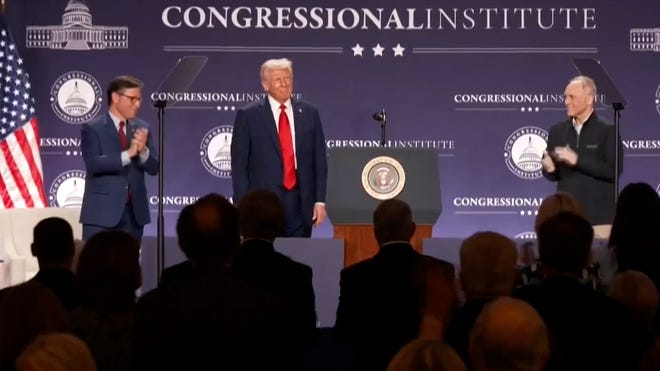Former President Donald Trump set his sights on bolstering America’s defenses with a U.S.-style Iron Dome, drawing inspiration from Israel’s missile shield. But according to one expert, such a system isn’t just unnecessary—it wouldn’t even function the same way.

President Donald Trump to order construction of iron dome – usatoday.com
Rocket scientist Ari Sacher, speaking on FOX Business’ Mornings with Maria, quickly clarified Trump’s vision:
“The president is using the term ‘Iron Dome’ as a metaphor,” Sacher explained. “It’s great for protecting Israel from short-range threats like those from Gaza or Lebanon. But for the United States? That’s a completely different ballgame.”
Early in his presidency, Trump signed an executive order focused on developing an advanced missile defense system. The goal? To create a shield against ballistic missiles, hypersonic weapons, and other next-gen threats, all under the banner of “peace through strength.”
A Different Kind of Defense for a Different Kind of Threat
Israel’s Iron Dome is designed to intercept rockets from close-range enemies, but the U.S. faces missile threats from thousands of miles away—think North Korea, China, and Russia. That requires a far more advanced system.
“To defend the U.S. homeland, you need something far beyond Iron Dome,” Sacher emphasized. “You’re not worried about missiles from Canada or Mexico. You’re dealing with potential attacks from across the globe.”
Instead of a ground-based system, Trump’s vision leans toward space-based interceptors—a network of defense satellites capable of neutralizing threats before they even enter U.S. airspace.
Sacher even joked about the terminology:
“Call it Iron Dome, call it ‘Fred’—it doesn’t really matter. It’s not the same system at all.”
The Biggest Challenge: Control, Not Firepower
Building a space-based missile defense system isn’t just about launching interceptors—it’s about managing an incredibly complex network in real-time.
“Understanding the ‘sky picture’ is key,” Sacher explained. “You have to identify every object—friend or foe. Imagine trying to make those split-second decisions in outer space, where one wrong move could lead to catastrophe.”
Despite the immense technical hurdles, Sacher believes the U.S. has the brainpower and determination to pull it off.
“The engineering talent is there, and America has the drive to make it happen,” he said. “The real secret isn’t just in the weapons—it’s in control.”
Whether Trump’s “Iron Dome” ever becomes a reality, one thing is clear: the future of missile defense is heading toward space.

